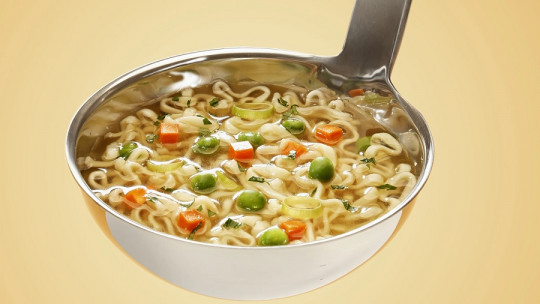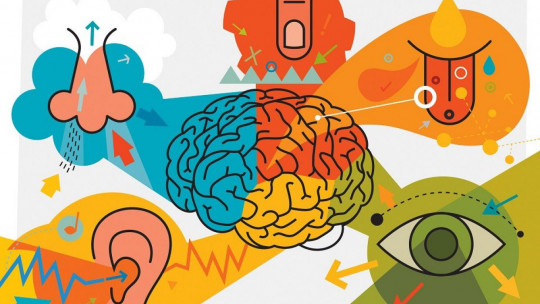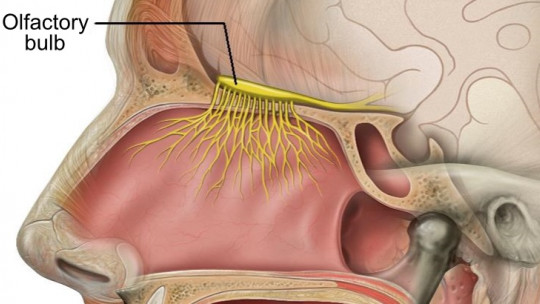
Taste and smell are two senses that, although important, have always been overshadowed by others such as sight or hearing. This implies that they have been little studied. However, we do know that There is a relationship between taste and smell
In this article we will learn about this link between both senses. Has a dish ever smelled so good that you thought, “If it tastes like it smells, it will be delicious!”? Here we will discover if there really is as much of a relationship between these two senses, as had always been thought.
How do these senses work?
Until you can smell a smell, a series of steps are taken: first odorants enter the nasal cavity and are detected by metabotropic receptors Transduction then occurs, that is, the process by which a cell converts a certain external signal or stimulus into another specific signal or response. A second messenger system is then activated that causes the depolarization of the sensory neuron and the action potential.
Furthermore, smell is the only sensory system whose information does not relay to the thalamus before reaching the primary cortex. Besides, cortical processing is ipsilateral ; This means that the information does not change sides in the brain, that is, the information that enters through the left nostril is processed in the left hemisphere, and the same with the right side.
Olfactory cells are bipolar ; The sensory axons synapse with the dendrites of the olfactory bulb, in units called glomeruli.
The olfactory system is divided into two:
Regarding the ability to perceive flavors, there are 4 submodalities of taste (types of taste): salty, sweet, sour and bitter (although a new one has recently been discovered, umami). At the brain level, the receptors for sour and salty are ionotropic, and the receptors for sweet taste are metabotropic; For bitter, both types of receptors act.
Here the sequence that occurs at the brain level to end up appreciating the flavors is the following: Gustatory information is carried by the Facial (VII), Glossopharyngeal (IX) and Vagus (X) cranial nerves
Unlike what happened with olfactory information, gustatory information does relay in the brain; The first relay is in the Nucleus of the Solitary Tract (bulb). Then this information goes to the pontine gustatory area, and from there to the Ventral Posteromedial Nucleus of the Thalamus (mostly ipsilateral pathways). Finally the neurons project to the Primary Gustatory Cortex
The relationship between taste and smell
But what is the relationship between taste and smell? Let’s get to know it in detail.
A group of scientists from the Institute of Neurosciences of Castilla y León (INCYL) of the University of Salamanca are developing various studies on the relationship between taste and smell. One of its researchers, Eduardo Weruaga, states that people often confuse concepts such as flavor, taste and smell, but that they are very different things.
When we taste something, the olfactory component is actually much more important than the gustatory component, although we usually think the opposite. That’s why when we have a cold we stop noticing flavors (“everything tastes like nothing”), due to our nasal congestion (our sense of smell is “nullified”).
In line with these statements, it is also known that many people who begin to lose the flavor of food and who believe they are losing taste, what they are actually losing is smell, the main component of that sensation.
Results to the studies
To explain the relationship between taste and smell, the group of scientists from the Institute of Neurosciences of Castilla y León (INCYL) of the University of Salamanca, together with the Spanish Olfactory Network, carried out a series of workshops five years ago where they presented these two senses, and they experimented with substances that stimulated them.
This group claims that Not all people smell and taste the same, and that some have greater potential than others. They also maintain that in some cases there is a genetic component that would explain why there are some people who are “supertasters” and others who are precisely the opposite. As for smell, this is more unknown.
Differences and similarities between taste and smell
Continuing with the relationship between taste and smell, we know that the only neurological relationship between these senses is that both are “chemical senses”, since identify chemicals in the environment
Eduardo Weruaga, the researcher, points out that “smell detects volatile chemical substances that are dissolved in the air, which cannot be done by the taste buds in the mouth, and taste detects substances dissolved in water.” These are two environmental media that do not mix in nature, and therefore They make us detect different substances through different pathways
On the other hand, the relationship between taste and smell is present, for example, in different foods, or in the fact that we perceive that “taste and smell” are united (although at the brain level they are not really linked). To illustrate the latter, think for example of when we say “this dish tastes like how it smells,” or “if it tastes like how it smells, it will be great.”
In short, according to these studies, the neural pathways of taste and smell have nothing to do with each other, although their perception occurs jointly once it reaches the brain.
Pathologies with loss of smell
Human beings give greater importance to vision or hearing, compared to taste and smell (unlike what happens with other animals). This makes taste and smell so little studied, although there are some 300 pathologies that include loss of smell among their symptoms. Complete loss of smell is called anosmia, and partial loss is called hyposmia
For example, Parkinson’s or Alzheimer’s cause certain neurological losses that affect smell. However, experts say that smell is often lost for reasons other than neurology, such as blockage of the nasal passages by polyps (parts of extra tissue that grow inside the body).
In colds or catarrhs we can also lose our sense of smell; even, although on fewer occasions, permanently.
The emotional memory associated with smells
On the other hand, smell, unlike the rest of the senses (including taste), is a very emotional type of perception or sense, since It is connected to brain areas responsible for managing emotions
It is said that olfactory memory is the most powerful, and that olfactory memories (certain smells or scenes associated with a specific smell), if they are also emotionally charged, are remembered much more.








